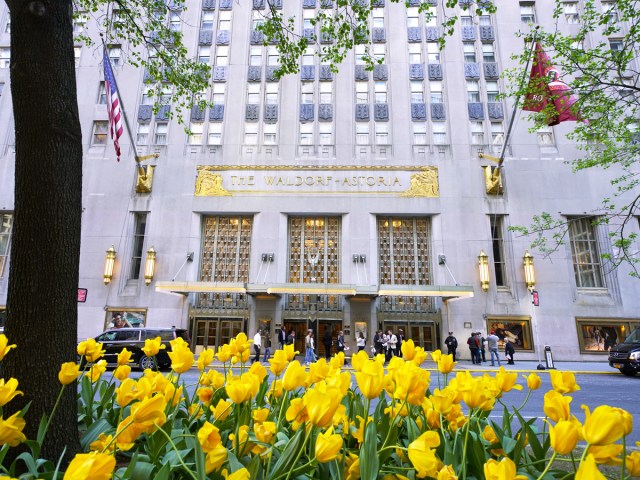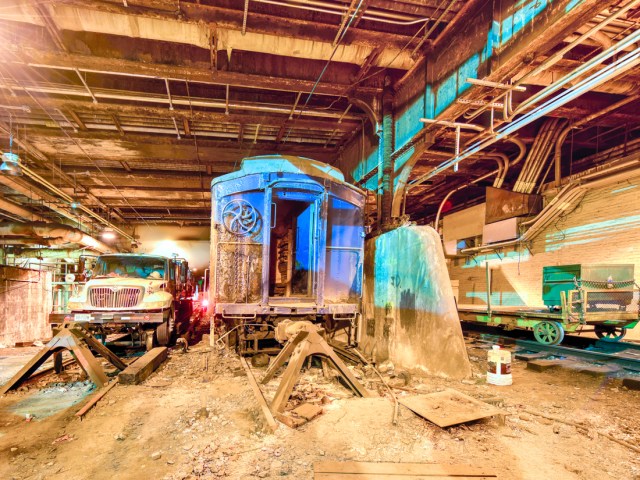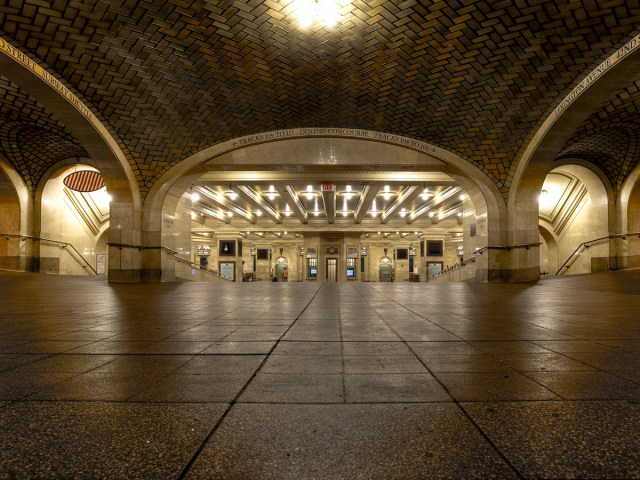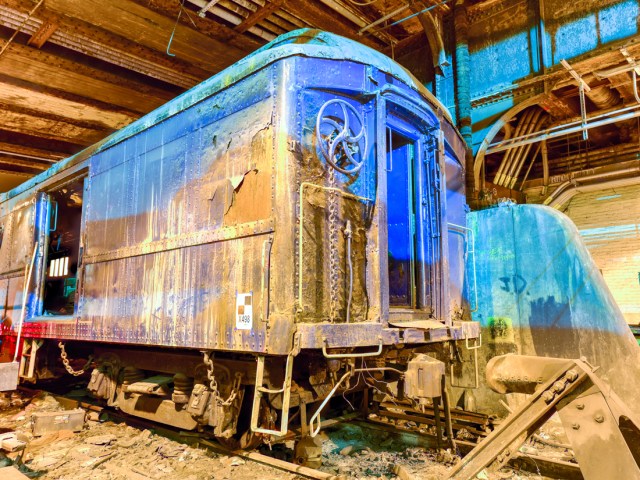New York City is full of hidden spots most tourists never encounter, from a secret subway platform at City Hall to rooftop gardens in Rockefeller Center and hospital ruins on Roosevelt Island. While those are all open to the public, there’s another, lesser-known secret that lies below one of the city’s most historic hotels in the heart of midtown Manhattan. Discover the storied history of Track 61, located beneath New York City’s iconic Waldorf Astoria hotel.
The Waldorf Astoria

The Waldorf Astoria New York opened in 1931, occupying an entire city block from 49th Street to 50th Street between Lexington Avenue and Park Avenue. The 47-story building was both the largest and tallest hotel in the world from the year it opened until 1957. The hotel hosted many glamorous events over the years, including the engagement party of Grace Kelly and Prince Rainier III of Monaco in 1956. The Waldorf Astoria also served as the temporary residence for both Marilyn Monroe and Frank Sinatra, among other A-list celebrities. After years of continuous operation, the Waldorf Astoria temporarily closed in 2017 to undergo extensive renovations. And despite many delays and setbacks, the hotel is finally scheduled to reopen in spring 2025.
Track 61

Located beneath the hotel is Track 61, which was built during the construction of the nearby Grand Central Terminal during the early 1900s. The track was intended to be used as a storage area for unused railroad cars, and it was also relied on to help carry away ashes from the power station that previously existed on the site of the hotel. As the Waldorf Astoria was being built in 1929, The New York Times reported that this private railway track could also be used by guests to directly access the hotel, instead of transiting through Grand Central. It wasn’t long until some guests began taking advantage of this hidden perk.
Who Got VIP Access?

One of the first confirmed private uses of Track 61 was in 1938, when General John J. Pershing — the only general appointed to General of the Armies while still alive — used this platform to access the hotel. World War II-era General Douglas MacArthur also used Track 61 during a 1951 visit. More recently, Track 61 was planned as a potential escape route during a 2003 visit to the United Nations by President George W. Bush. But the most famous person to rely on this secret entrance was President Franklin D. Roosevelt.
According to author Sam Roberts, Roosevelt used this secret access route during visits to New York City, “in part to hide his disability from the public.” On one occasion, FDR’s private limo was privately transported along the tracks directly underneath the hotel, and then lifted into the garage by an elevator. The president’s private railcar would wait for FDR underneath the hotel and take him directly back to his home upstate in Hyde Park.
For many years, a private train car sat gathering dust on Track 61, and it was rumored to have belonged to FDR. The myth persisted for quite some time until the railcar was relocated to the Danbury Railway Museum in Connecticut. It was eventually revealed to simply be a normal storage car without any connection to the former president.
Other Uses for Track 61

In addition to serving as a VIP entry, Track 61 has been used, on rare occasions, for other purposes over the years. In 1946, a new diesel-electric powered train was exhibited on Track 61, denoting the only instance in which the track was open to the public. Two years later, a fashion show was staged on Track 61 as a collaboration between the clothing store Filene’s and the New Haven railroad. It was also the site of an exclusive “underground party” in 1965 that featured artist Andy Warhol.
Note: All featured products and deals are selected independently and objectively by the author. Daily Passport may receive a share of sales via affiliate links in content.
More from our network
Daily Passport is part of Inbox Studio, which publishes content that uplifts, informs, and inspires.
















